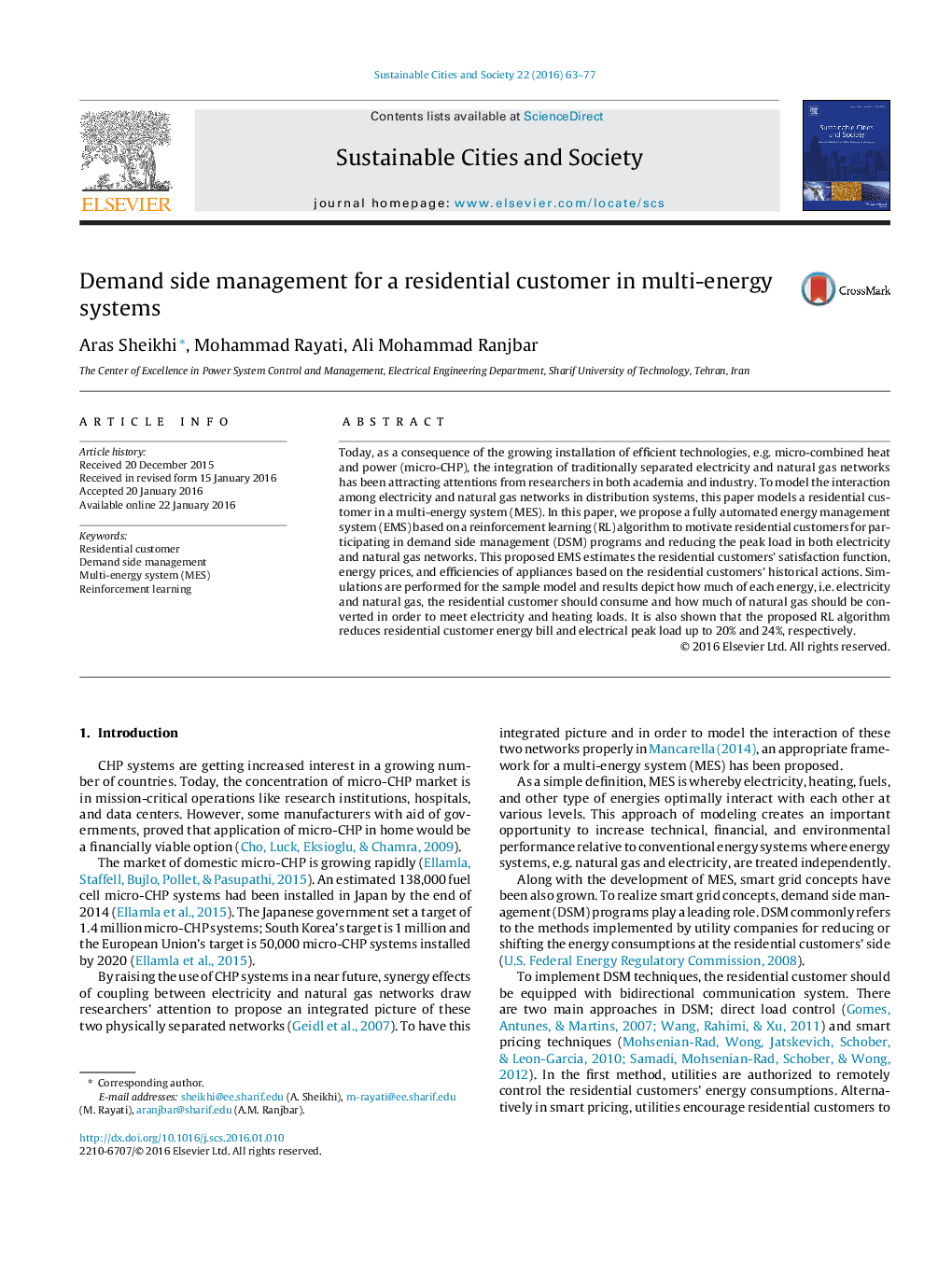| کد مقاله | کد نشریه | سال انتشار | مقاله انگلیسی | نسخه تمام متن |
|---|---|---|---|---|
| 308064 | 513520 | 2016 | 15 صفحه PDF | دانلود رایگان |
• Fully automated EMS based on a reinforcement learning (RL) is introduced.
• Focusing on the modeling of a house as a multi-energy system to be adaptable with RL.
• Household load is optimally managed in the stochastic environment via RL algorithm.
• RL algorithm reduces household energy bill up to 20%.
Today, as a consequence of the growing installation of efficient technologies, e.g. micro-combined heat and power (micro-CHP), the integration of traditionally separated electricity and natural gas networks has been attracting attentions from researchers in both academia and industry. To model the interaction among electricity and natural gas networks in distribution systems, this paper models a residential customer in a multi-energy system (MES). In this paper, we propose a fully automated energy management system (EMS) based on a reinforcement learning (RL) algorithm to motivate residential customers for participating in demand side management (DSM) programs and reducing the peak load in both electricity and natural gas networks. This proposed EMS estimates the residential customers’ satisfaction function, energy prices, and efficiencies of appliances based on the residential customers’ historical actions. Simulations are performed for the sample model and results depict how much of each energy, i.e. electricity and natural gas, the residential customer should consume and how much of natural gas should be converted in order to meet electricity and heating loads. It is also shown that the proposed RL algorithm reduces residential customer energy bill and electrical peak load up to 20% and 24%, respectively.
Journal: Sustainable Cities and Society - Volume 22, April 2016, Pages 63–77
